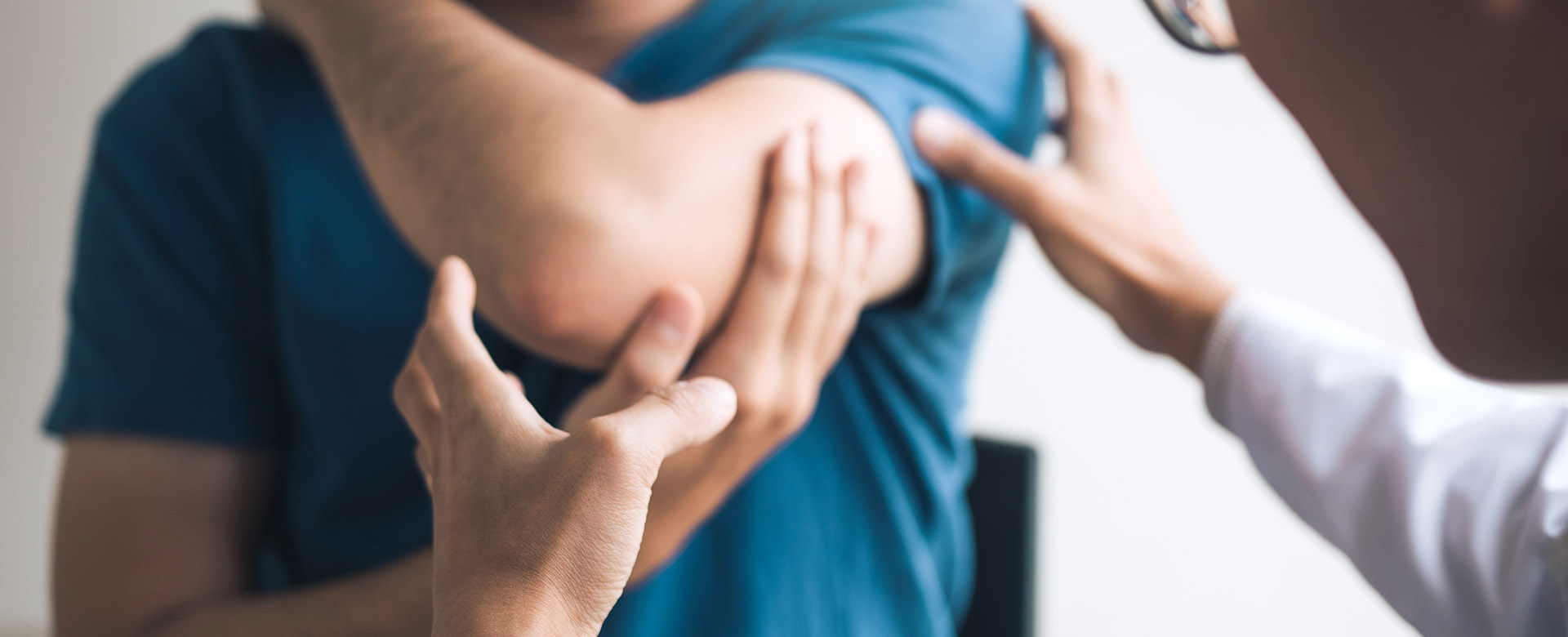Non-Surgical Treatments for Additional Joints
We have more than 300 joints in our body, providing numerous functions and mobility. Consisting of cartilage, synovial fluid, ligaments, tendons, bursas, and more, joints are essential for activity. However, the greater range of motion that a joint has, the greater risk it has for injury.
The hips, knees, and shoulders are some of the most prominent joints in the body, but there are a few other joints that are critical for our daily life.
Elbow
The structure of the elbow is similar to that of the knee, as both are synovial hinge joints. The elbow muscles allow the forearm to flex and extend while also enabling rotation of the forearm and wrist.
Common Elbow Conditions
Overuse and sports injuries can cause a variety of elbow conditions. Those who play tennis, baseball, or golf are particularly susceptible to an elbow injury due to the high levels of stress placed on the elbow when throwing or swinging in repetitive motions.
Some common elbow conditions are:
- Tennis Elbow: also known as lateral epicondylitis, when elbow tendons become inflamed or partially torn
- Elbow Dislocation: when the elbow bones are shifted out of alignment
- MCL Tear: when the medial collateral ligament is torn, often requiring reconstruction surgery
Elbow Pain
Elbow pain can affect the inner or outer elbow joint. The symptoms may include:
- Numbness or tingling
- Weakness in the hand or forearm
- Burning sensation
Foot and Ankle
The foot and ankle are strong and complex structures. As weight-bearing joints, the body places a significant amount of stress on this region of the body, especially when performing high-impact activities, making it vulnerable to injuries.
Common Foot and Ankle Conditions
Among the most frequently seen conditions that cause foot and ankle pain include:
- Achilles Tendonitis: when the Achilles tendon in the heel becomes inflamed
- Foot and Ankle Arthritis: when a type of arthritis causes inflammation in one or more of the joints in the foot and ankle region
- Ankle Sprains: can be classified into three levels of severity, occurs when the ligaments in your ankle have been overstretched or torn,
- Plantar Fasciitis: when the plantar fascia, the thick band of tissue that runs along the underside of your foot, becomes inflamed
- Foot and Ankle Fractures: when the bones in the foot and ankle are cracked or broken due to sudden trauma
Foot and Ankle Pain
The above conditions can cause pain on the sole of the foot, the heel, or behind the heel. These conditions are often caused due to:
- Overuse
- Prolonged walking or standing
- Improper shoe wear
- Anatomical structure of the feet
- Sudden injury
Treatment
After your comprehensive physical examination, our team at Rejuvinix will be able to accurately diagnose the condition causing your joint pain. Once your condition is diagnosed, proper treatment may include:
At Rejuvinix, we offer a variety of personalized treatments to help you find pain relief. To learn more about which treatment is right for you, fill out the “Request an Appointment” form below.

